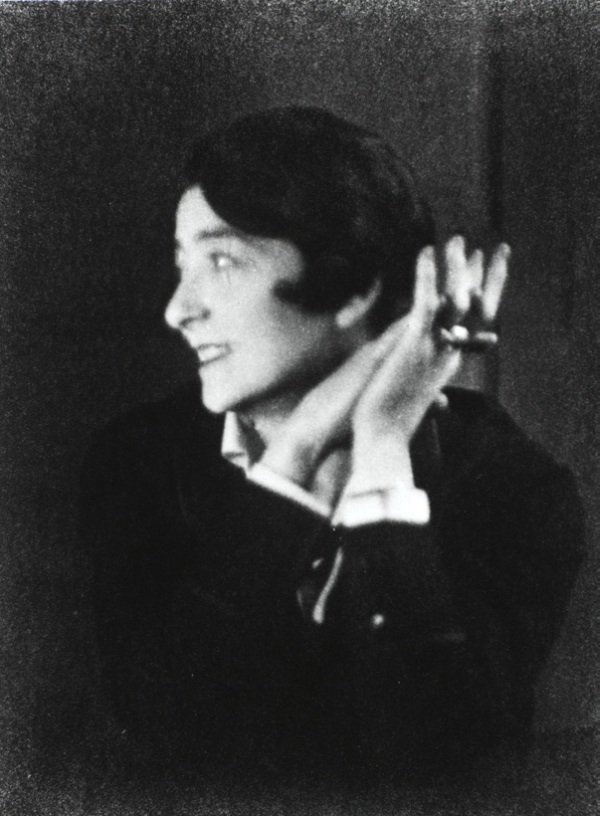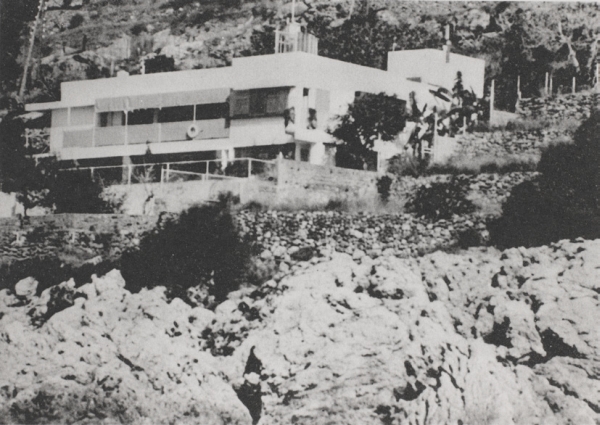
From February 20th until May 20th 2013 the Centre Pompidou Paris is presenting a major retrospective devoted to the Irish artist, designer and architect Eileen Gray.
As someone who once claimed "The future projects light, the past only clouds" we're not 100% certain the subject herself would approve; however, for us it is a welcome and long overdue Eileen Gray retrospective, and fittingly one being staged in the city that more than any other influenced and defined her life, character and career.
Born in Enniscorthy, Wexford County in 1878 as the youngest of five children to the Scottish landscape artist James Maclaren Smith and his wife Eveleen Pounden - the future 19th Lady Gray - Kathleen Eileen Moray Smith grew up in comfortable surroundings, splitting her time between the family homes in Enniscorthy and London. By all accounts an independently minded young lady, a trip to Paris in 1900 to visit the Exposition universelle encouraged the 21 year old Eileen to study art and on her return to London she promptly enrolled at the Slade School of Fine Art.
In 1902 she returned to Paris to study at first the Académie Colarossi and subsequently the Académie Julian; and although the move to Paris was originally temporary and largely motivated by academic pursuits, the prevailing atmosphere in the French capital at the turn of the century coupled with the opportunities presented saw not only Paris become Eileen Gray's new home, but France as a whole her adoptive homeland.
Whereas Eileen Gray is today probably best known for furniture pieces such as the Adjustable Table or Bibendum Armchair, she was a fabulously prodigious talent and in an active career encompassing some seven decades her creative output ranged from oriental lacquer work and weaving over photography, water colours and on to the more familiar architecture and furniture design.
The public phase of Eileen Gray's career was largely played out in the 1920s and 30s: as with many of her contemporaries the destruction of the World War II applied not only to Eileen Gray's property but also her career, and in the post-war years she became increasingly withdrawn from the commercial market, dividing her time between her villa Lou Pérou near Saint Tropez and her flat in Paris, where she died on October 31st 1976.
Fortunately, shortly before her death Eileen Gray was "re-discovered" by a new generation, a re-discovery which allowed her to regain her rightful place in the history of European art and design.
That Eileen Gray needed to be re-discovered is not that surprising. For all the fame and honour currently heaped on Modernist artists, designers and architects, back in the day they were pretty much a species for themselves. And certainly in the inter-war years when Eileen Gray was at her most productive they more often resembled a smug, self-contained clique than a revolutionary movement on the ascendancy. Yes, one or the other managed to raise their head above the parapet of popular perception; however, most sold works to people they knew and local museums without ever being picked up on any form of cultural radar. That all came later.
Which is one of the reasons why in-depth, imaginatively curated retrospectives are required. We simply know too little.
One of the few Eileen Gray retrospectives of note was staged in 2005 at the Design Museum London, a retrospective that caused Andrew Lambirth to write in The Spectator:
We've not seen the Centre Pompidou exhibition yet, and so, somewhat obviously, can't comment on how well it either achieves its aims or serves up a toothsome and authentic taste of the subject matter.
However, looking at the list of exhibits and the room plans, they certainly have all the right ingredients for a fascinating and informative exhibition. And so we're quietly optimistic that Eileen Gray at the Centre Pompidou will ease our colleagues hunger.
On a side note, Andrew Lambirth's review of the Design Museum show is titled "Shades of Gray" - which is of course only a "5" and "0" away from being the pun we're most expecting to see in relation to the Centre Pompidou exhibition.
Just to be clear, "Cinquante nuances de Grey" is not a clever pun.
Curated by Cloé Pitiot, and featuring over 200 objects including photographs, sketches, furniture and architectural plans, Eileen Gray at the Centre Pompidou is organised, more or less, as a two act, chronological stroll through the life and career of a most remarkable woman.
Opening with her lacquer work the exhibition then moves over the influence and role played by both the art collector Jacques Doucet and the Galerie Jean Désert - opened by Gray in 1922 and scene of some of the most important developments in her career - before reaching perhaps Eileen Gray's most lasting and endearing monument, the villa E 1027 in Roquebrune-Cap-Martin.
The second part of the exhibition is devoted to two further architectural projects, Lou Pérou and Tempe a Pailla; the two men in her life, Jean Badovici and Le Corbusier; and two sections devoted to what one could call more personal aspects: rarely seen examples of her painting and photography and "Le portfolio d’Eileen Gray" a private collection Eileen Gray compiled of, well mementos, and other private, personal insights of and into her projects.

Back in May 2012 in our report from Gerrit Rietveld – The Revolution of Space at Vitra Design Museum, we noted that it was probably a good thing that Gerrit Rietveld decided against joining the happy clappy Bauhaus troupe. Similarly it is to be thanked that Eileen Gray choose to spend the 1920s and 30s in France rather than Eastern Germany.
For, emancipated from the dogma of Bauhaus, and free to float on the gentle breeze of innovation and change wafting over Europe, Eileen Gray was to develop into one of the most interesting and versatile creative minds of her age and an artist who, unquestionably, moved more freely and competently between the conflicting fronts of the Arts and Crafts and Modernist movements than any of her contemporaries.
Yet is an artist who today remains a mystery. A symbol of a time represented by some iconic objects but little known beyond.
As we implied at the beginning, Eileen Gray was not someone who necessarily cared to deeply for the past. In the exhibition press notes her biographer Peter Adam quotes Eileen Gray as once saying, "I like doing things, I hate possessing them. Memories cling to things and objects, so it is best to start all over again." For our part we're glad that the Centre Pompidou have chosen to ignore this personality trait to try to help us better understand the complete character and her canon - through the memories attached to the exhibits.
If you happen to be in Paris this spring, finding an afternoon to visit the Center Pompidou might not be the worst decision you make.
The exhibition Eileen Gray can be viewed at the Centre Pompidou Paris until May 20th 2013.
Full details can be found at www.centrepompidou.fr/en
